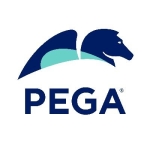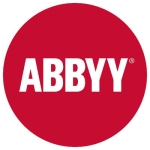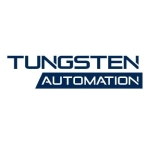What is our primary use case?
We use this product to automate business processes with higher accuracy, efficiency, scalability, and robustness. The projects include applications like SAP, SAP BOBJ, SAP BI, and a few legacy enterprise applications like Oracle EBS, and Oracle BI Discoverer.
These applications can be easily automated using Automation Anywhere, and integration with Outlook or Gmail for email, so that automatic responses can be set, is something else that can be easily included.
In a few of our environments like HR and finance, where the process runs with higher priority, Automation Anywhere works perfectly.
How has it helped my organization?
In our organization, areas like the human resources department and revenue department are completely being replaced by robots. The bots are saving a massive amount of human time and also reducing the intervention.
The process we have called Job Posting involves scraping data from two websites and posting the job in another's portal. This normally takes three people almost 50-60 hours per week, whereas the bot can easily do it in two hours. This is one of the important use cases that we have implemented.
The tool is designed to be easy enough for a new user to automate tasks.
What is most valuable?
The first and foremost feature is the availability of activities. These include activities for the keyboard, mouse, different types of loops, conditional, clipboard, and many more.
The overall UI of the tool is so user-friendly that even a beginner can use it easily.
The predefined recording facility is helpful and it mainly includes three types, being smart, screen, and web.
Automation can be more complex when the use case is to scrape text from a non-digital image, although thanks to Automation Anywhere's image recognition and OCR facility, the job can be completed easily.
What needs improvement?
One of the important drawbacks of Automation Anywhere is that it needs to be able to show the automated process as a single flowchart. After complete deployment of the bot, such as a Task Bot, to see an overview of the complete process and the steps in the job is difficult. As such, I would like to suggest that they provide an option to show the entire process as a flowchart. This isn't required for the UI pane, but perhaps simply export it as a flowchart. This would be great.
The ability to automate using third-party code involvement should be improved. As far as I know, Python scripts can be used to automate a few use cases but it would be great if there is a change to include the .NET and C# languages. I've also worked on UiPath and .NET code can be used for most of the Excel automation. This includes operations like creating pivot tables and applying advanced filters. These are things that work directly with VB.NET code.
Automation anywhere needs a forum where active users can provide answers for standard errors and exceptions. More webinars regarding the latest releases and the features should also be created.
For how long have I used the solution?
Automation Anywhere has been used for less than one year in our organization.
What do I think about the stability of the solution?
I would say the stability of the solution depends on how well the developer understands the process. When it comes to the product's stability, Automation Anywhere is doing a great job in maintaining timely releases.
What do I think about the scalability of the solution?
I would say this product is very scalable and the ability to have Metabots and Task Bots makes it even more so.
How are customer service and technical support?
Automation Anywhere has a great technical support team. We had a situation where the bot needed to deal with difficult tasks and the entire team got stuck. At this point, we had the idea of asking technical support for help, and the response time was very good.
Which solution did I use previously and why did I switch?
I came from a UiPath background and I haven't completely moved to Automation Anywhere. I still work on both of these tools. Based on the use cases and the client's requirements, the appropriate tool will be chosen.
To speak in particular about Automation Anywhere, I've heard a few of our clients saying that Automation Anywhere has much more ability, such as the usage of Metabots, and Task Bots, which can be used repeatedly in different use cases. To me, this is a very interesting feature.
How was the initial setup?
The initial setup was a bit hectic, but later on the with the help of the wonderful support team, it went smoothly.
What about the implementation team?
I would rate the vendor team an eight out of ten.
What was our ROI?
So far, the organization has 20+ bots, which has generated more than $50K of ROI. As a developer, I am not familiar with all of the numbers.
What's my experience with pricing, setup cost, and licensing?
Pricing is a bit high when compared to other available tools; however, the tool is worth the cost.
Which other solutions did I evaluate?
When it comes to automation, the common question will be to compare the tool with other available tools and as per my knowledge, the first comparison happens with UiPath. Although UiPath has its own advantages, when it is balanced with the most popular capabilities like scalability, security, and maintenance, Automation Anywhere wins.
What other advice do I have?
I would like to suggest the vendor have a well-maintained community forum, where the notice board should be available to notify of upcoming releases. I would also like to see more webinars conducted to help make the tool more popular
It is good to see more improvements in the tool and the effort of the team to implement all of the latest features is highly appreciated.
Which deployment model are you using for this solution?
Private Cloud
If public cloud, private cloud, or hybrid cloud, which cloud provider do you use?
Other
Disclosure: My company does not have a business relationship with this vendor other than being a customer.

















